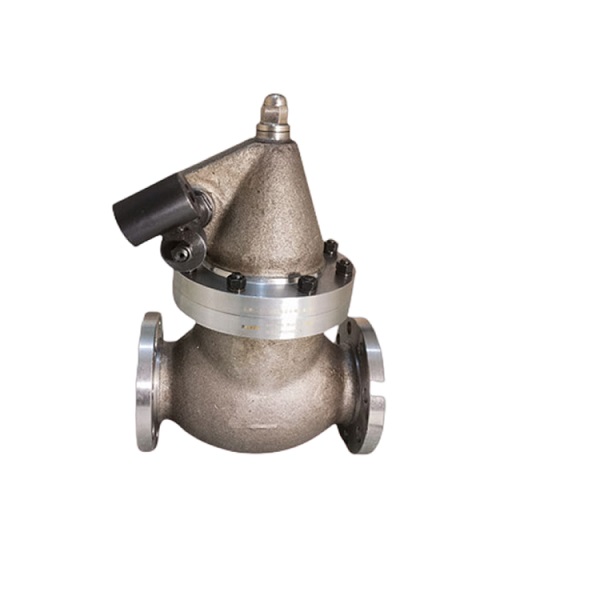
Structure
The sealing oil vacuum oil tank float valve BYF-80 is composed of a floating ball and transmission lever mechanism, a hydraulic amplification and adjustment piston controlled by a needle plug, etc. The piston adopts a differential pressure structure, with an upper area greater than the lower sealing surface. The oil supply pressure oil source enters the middle chamber of the piston and enters the upper chamber through two small holes. There is a small hole in the center of the piston that is connected to the oil tank and controlled by a needle plug.
Working principle
When the liquid level in the oil tank is at the normal level, the buoyancy generated by the floating ball is transmitted through a lever and amplified, causing the conical head of the needle plug to tightly press the small hole in the center of the piston. The pressure oil source enters the upper chamber of the piston to generate pressure. As the upper area of the piston is larger than the lower sealing area, the piston acts downward and tightly presses against the sealing surface. The sealing oil vacuum oil tank float valve BYF-80 is in a closed state.
When the oil level in the fuel tank drops and the buoyancy of the floating ball decreases, the needle plug moves to the right when the force to the right is greater than the buoyancy force to the left. The needle plug opens the center hole of the piston, and the pressure oil in the upper chamber of the piston is discharged into the vacuum fuel tank. The pressure oil in the middle chamber of the piston pushes the piston to the right and opens the valve to replenish oil to the fuel tank.
When the oil level rises to a certain position, the buoyancy of the floating ball increases, causing the needle valve cone to tightly press the center hole, and the piston upper chamber is connected to the pressure oil source. The valve is closed and the refueling is completed. The entire refueling process is carried out slowly with changes in liquid level. In fact, the needle plug and piston are in motion. The working principle is the same as the oil drain valve, which controls the oil tank level.
- English
- French
- German
- Portuguese
- Spanish
- Russian
- Japanese
- Korean
- Arabic
- Irish
- Greek
- Turkish
- Italian
- Danish
- Romanian
- Indonesian
- Czech
- Afrikaans
- Swedish
- Polish
- Basque
- Catalan
- Esperanto
- Hindi
- Lao
- Albanian
- Amharic
- Armenian
- Azerbaijani
- Belarusian
- Bengali
- Bosnian
- Bulgarian
- Cebuano
- Chichewa
- Corsican
- Croatian
- Dutch
- Estonian
- Filipino
- Finnish
- Frisian
- Galician
- Georgian
- Gujarati
- Haitian
- Hausa
- Hawaiian
- Hebrew
- Hmong
- Hungarian
- Icelandic
- Igbo
- Javanese
- Kannada
- Kazakh
- Khmer
- Kurdish
- Kyrgyz
- Latin
- Latvian
- Lithuanian
- Luxembou..
- Macedonian
- Malagasy
- Malay
- Malayalam
- Maltese
- Maori
- Marathi
- Mongolian
- Burmese
- Nepali
- Norwegian
- Pashto
- Persian
- Punjabi
- Serbian
- Sesotho
- Sinhala
- Slovak
- Slovenian
- Somali
- Samoan
- Scots Gaelic
- Shona
- Sindhi
- Sundanese
- Swahili
- Tajik
- Tamil
- Telugu
- Thai
- Ukrainian
- Urdu
- Uzbek
- Vietnamese
- Welsh
- Xhosa
- Yiddish
- Yoruba
- Zulu
- Kinyarwanda
- Tatar
- Oriya
- Turkmen
- Uyghur









